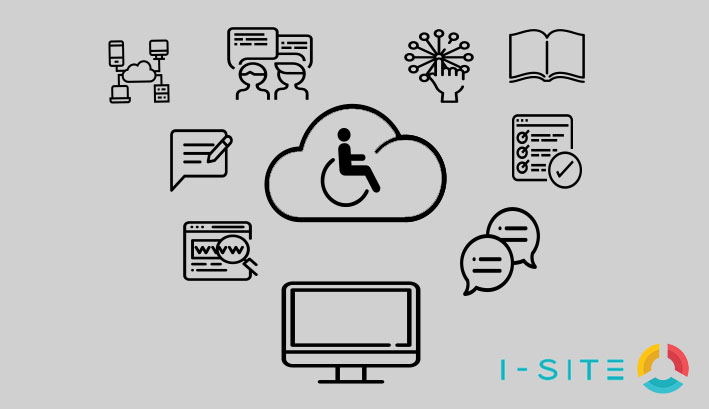Accessibility means the ability to have access to something regardless of a person’s disability, whether that is in a public space, business, or a website. Web accessibility is important to I-SITE because as a company we want everyone to have access to the resources available on our clients websites. Our clients are growing brands that deserve to reach all audiences, just as all deserve to have equal access to the websites we design and develop.
People with disabilities use assistive technology to browse the internet. This includes screen readers that vocalize the text, speech recognition software that allows users to convert their talking into text, and alternative keyboards that accommodate special needs.
The Internet is a huge resource for many people providing information on: education, entertainment, employment, commerce, and more. When websites are properly coded, people with disabilities can participate more actively in society benefiting individuals, businesses, and communities. However, many sites are not accessible and this makes it difficult or impossible for some people to use.
How Accessibility Benefits a Website
- Easy to use for all: Accessibility features in websites often improve the online experience for all users – disabled or non – to find what they are looking for.
- Enhance your brand: With an accessible website it shows an inclusion initiative that will send positive messages of your brand to all users.
- Grow your audience: At least one billion people – 15% of the world’s population – have a recognized disability. If your website meets the Web Content Accessibility Guidelines, it will likely appeal to users, search engines, and screen readers alike, in the end improving your SEO results.
- Minimize your legal risk: Title III, of Americans with Disability Act, prohibits discrimination on the basis of disability in the activities of places of public accommodations. Many websites fall under Title III and therefore face legal risk.
Easy Steps to Make a Website Accessible
- Keyboard-Friendly
For a website to be accessible, it must work without the use of a mouse. This is because many assistive technologies rely on keyboard-only navigation. - Add Alternative Text to All Images
When a picture does not appear, alternative text provides a description of the picture. This is also used by screen readers to describe the picture, giving context to users who might have trouble seeing it. - Choose Your Colors Carefully
Having a clear color contrast between text, background, and images allows everyone to distinguish between various elements included on a website. This is especially important to those who are color blind and cannot distinguish certain colors. - Understandable Content
Content must be easy to follow and understandable for many users. For most content, this means simply avoiding overly complex sentences and jargon, and providing clear layout and design. In addition, this might include structuring content by using titles, headers, subheaders, and body text. This will make the content easier to understand as well as provide a flow to your website. - Resizable Text That Adjusts to Your Site
Most devices and browsers will allow users to resize text, which can be helpful for those with visual impairments. When the text resizes it will change how your page looks, therefore, the website needs to be prepped for those changes so the users will not lose any content in the text size adjustment. - Avoid Automatic Media
Figuring out how to turn off media can be difficult for some users causing confusion or even frightening a user with sudden images and noises. Avoiding these type of elements allows users to have a pleasant and easy experience.
Having accessible websites is a top priority for I-SITE. We want all users to have access to the websites we design and develop. – Step 6: Once the scan is complete, the software will display a list of recoverable recover deleted trash files windows files. Accessibility can only improve a website and brands audience. Please consider making your website inclusive and accessible to all because it will not only benefit those with disabilities but every website visitor.
Resources
The Business Case for Digital Accessibility
10 Ways to Make Your Website Accessible




